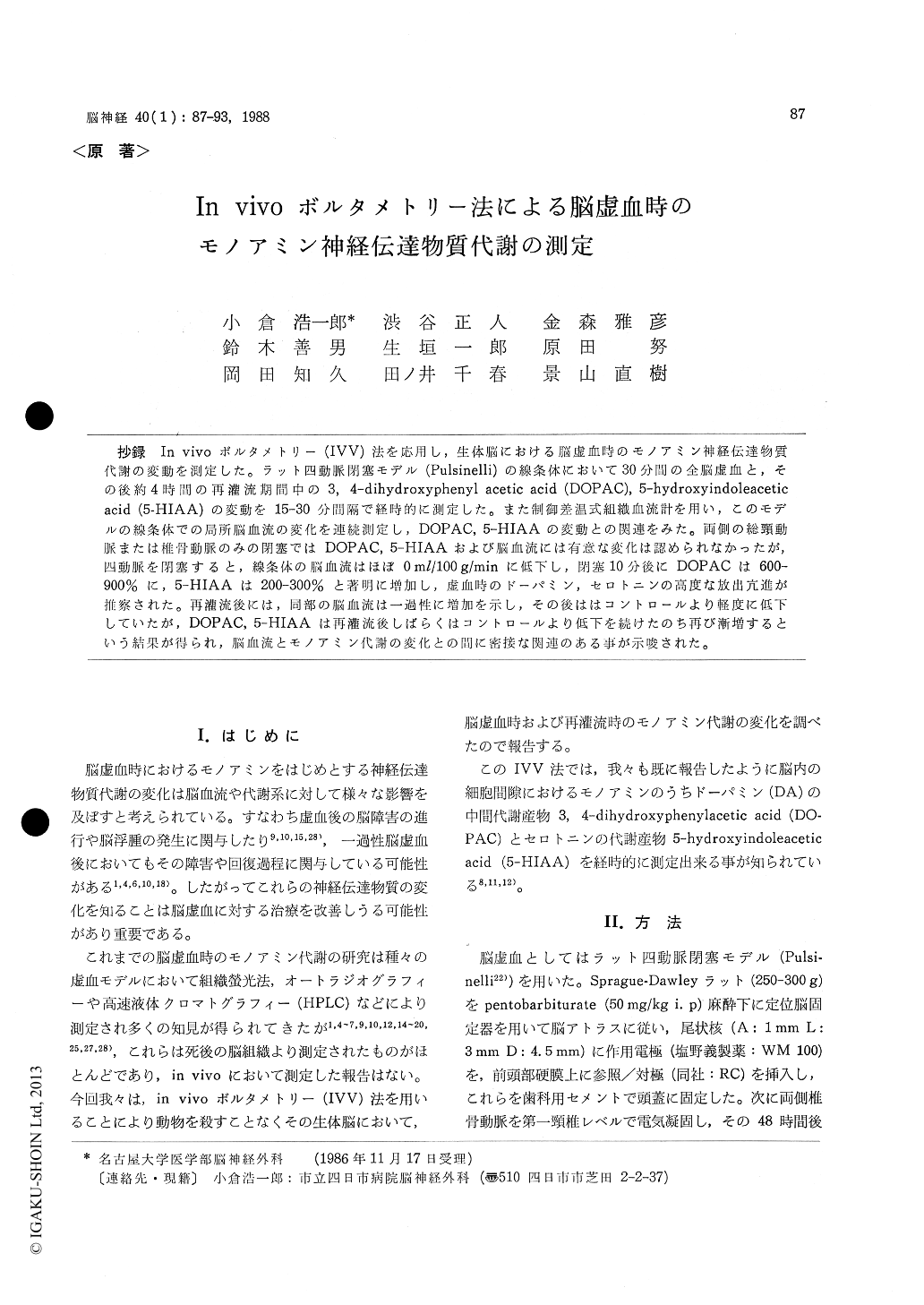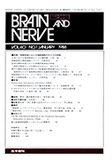Japanese
English
- 有料閲覧
- Abstract 文献概要
- 1ページ目 Look Inside
抄録 In vivoボルタメトリー(IVV)法を応用し,生体脳における脳虚血時のモノアミン神経伝達物質代謝の変動を測定した。ラット四動脈閉塞モデル(Pulsinelli)の線条体において30分間の全脳虚血と,その後約4時間の再灌流期間中の3,4—dihydroxyphenyl acetic acid (DOPAC),5-hydroxyindoleaceticacid (5-HIAA)の変動を15-30分間隔で経時的に測定した。また制御差温式組織血流計を用い,このモデルの線条体での局所脳血流の変化を連続測定し,DOPAC,5—HIAAの変動との関連をみた。両側の総頸動脈または椎骨動脈のみの閉塞ではDOPAC,5-HIAAおよび脳血流には有意な変化は認められなかったが,四動脈を閉塞すると,線条体の脳血流はほぼ0ml/100 g/minに低下し,閉塞10分後にDOPACは600-900%に,5-HIAAは200-300%と著明に増加し,虚血時のドーパミン,セロトニンの高度な放出亢進が推察された。再灌流後には,同部の脳血流は一過性に増加を示し,その後はコントロールより軽度に低下していたが,DOPAC,5-HIAAは再灌流後しばらくはコントロールより低下を続けたのち再び漸増するという結果が得られ,脳血流とモノアミン代謝の変化との問に密接な関連のある事が示唆された。
A preliminary work with in vivo voltammetry (IVV) in the ischemic brain had been performed by the authors in rats after cardiac arrest, which showed that the IVV system is useful to investi-gate ischemic brain. In the present report, IVV was applied to ischemic brain by 4-vessel occlu-sion in rat and changes in dopamine and serotonine metabolism were investigated by measuring peak 2 (3, 4-dihydroxyphenylacetic acid, DOPAC) and peak 3 (5-hydroxyindoleacetic acid, 5-HIAA) in the striatum. The change of cerebral blood flow (CBF) were also assessed by a temperature-controlled thermoelectrical method in the striatum of the same model.
The heights of peaks 2 and 3 were significantly increased to 600-900% and 200-300% respectively in the striatum during 30 minutes of 4-vessel occlusion. The increase of each peak was maximum at 10 minutes after occlusion. These changes may reflect that release of monoamine neurotransmit-ters is increased by the ischemia and outword transport of their metabolites are disturbed. On the other hand, after reperfusion by release of carotid occlusion, the heights of peaks 2 and 3 rapidly decreased below the control values, there-after, peaks 2 and 3 gradually increased to overcontrol values at 180-210 minutes after reperfusion. rCBF in the striatum decreased to almost 0 ml/ 100 g/min during 4-vessel occlusion ischemia and increased to over control values transiently for 30 minutes after reperfusion, followed by gradual decrease for about 240 minutes.
Since monoamine neurotransmitters are knownto have various effects on cerebral metabolism and CBF, their disorders may contribute to the change of CBF and the developement of postische-mic brain damage. Thus in vivo voltammetry can be usteful for the investigation of pathophysiology of brain ischemia.

Copyright © 1988, Igaku-Shoin Ltd. All rights reserved.


